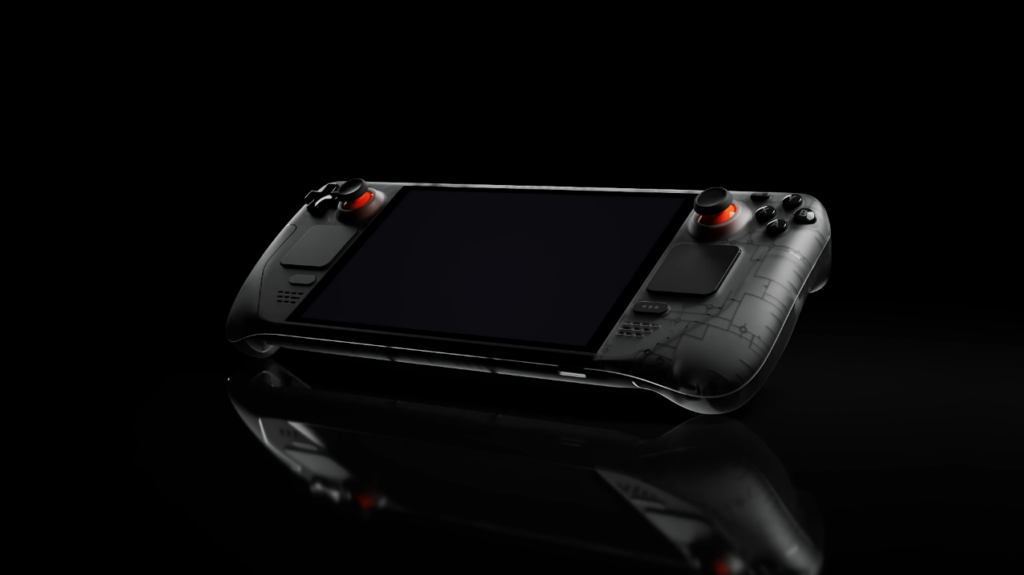Whether you like the device or not, the handheld PC market would be nowhere near what it is now if Valve never made the Steam Deck. With the balance of power, battery life, and an optimized operating system (SteamOS), the Steam Deck was priced low enough to boost this market into the general consumer area, a place it wasn't before. Now, Valve is releasing a mid-generation refresh that breathes a lot of new life into the console, making near essential improvements I have been hoping for, but the reaction has been mixed.

The Steam Deck OLED is taking over two of the three older models and includes new updates like the OLED HDR screen, support for 90Hz refresh rate, a bigger battery, better WiFi card, lighter weight, and a smaller APU. For some, this is more than enough to justify upgrading to the new model, but for others, we have seen lukewarm responses that criticize Valve for releasing an upgrade like this so soon or without any sort of trade-in program.
While I can understand the reasoning behind it, and why some may be put off by an upgrade like this so quickly, these are necessary upgrades that, in the end, will benefit new adopters and the handheld PC market overall.
Why the Steam Deck OLED Is Necessary, But Optional
Thanks to Valve making the handheld PC market more mainstream, other manufacturers have started putting out their own version of devices. We have those like AYANEO, GPD, and ONE-NETBOOK who have been making handhelds before this and gaining more prominence, and those like ASUS and Lenovo who are diving in for the first time. Each device has its place, thanks to its aesthetics and gimmicks, but they all end up being compared to the Steam Deck. Specifically, there are three aspects that are usually compared the most: Power, Screen, and Operating System.
The Steam Deck OLED tackles these issues in a couple of different ways, as well as adding their own other upgrades in. The biggest one out of all of these is the screen. With an OLED HDR screen, the new Deck will undoubtedly have the superior screen in terms of color accuracy and vibrancy. This was easily my biggest issue with the original and something I was hoping they would correct, which they did. They also increased battery life by 10Wh, making it larger than both the ROG Ally and Legion Go. There are other upgrades too, but these are the two biggest ones to warrant an upgrade.

These two are going to be a night and day difference compared to the old Steam Decks that use LCD screens. The screen is going to become more efficient and exceptionally more colorful, with blacks that are truly black. For comparison, the Steam Deck's LCD screen covers 67% of the sRGB color spectrum, the OLED covers almost 100%. It also covers 101% of the DCI-P3 spectrum, while the original only covers 45There is no need for a backlight, so if parts of the screen are black, it will look like the device is shut off. With the extra battery, coupled with how efficient SteamOS is, we are seeing some massive battery gains with games that aren't super heavy, sometimes even going up to over 10 hours of gameplay.
There are tons of upgrades for the new model too, including a slightly smaller APU, updated memory, better thermals, updated refresh rate, touchscreen improvements, 1000 nits brightness, updated WiFi and Bluetooth, improved bass response, better trackpad haptics, faster charging, lower weight, and improved resume time, all of which came relatively quick after the initial release of the Steam Deck. It feels very quick, but it actually makes sense as to why it's happening now.
Why Valve Needs to Release This Now
One of the biggest questions I have seen regarding the new refresh is why they would release something so quickly after the original shipped. Well, there are multiple reasons, but the biggest is competing while keeping in-line with their original goals.
The biggest thing Valve's competitors have over the Deck is power. Most of the new devices coming out are equipped with a Z1 Extreme or AMD 7840U APU, both of which offer some massive improvements in power in AAA games. These chips can handle a lot of the biggest games that the Steam Deck can't, or push games to higher framerates. Other than Windows OS being used, this is the biggest selling point for the bulk of these devices, and the one part of the Steam Deck Valve doesn't want to touch yet.

Valve has made a plethora of statements saying they wouldn't upgrade the power of the Deck until the next generation, which is years away. If Valve kept in line with this, but other devices kept coming out, it's very possible they could get more and more competitive and really start edging the Deck out. With this refresh, Valve fixed some of the biggest complaints, and going further in some ways, while keeping in line with their commitment to generational leaps in power. Yes, the new device has a slightly smaller APU, but the power is largely the same.
Doing this keeps Valve's name at the forefront of the market, while showing that they are not here to play, but there is one big advantage of Valve upgrading like this: The old Steam Decks are not irrelevant in any way.
Optional Upgrades In the End
By keeping in line with their dedication to not increasing power, Valve has kept their original Steam Decks still viable with many of the systems that are in place, like the Verified system. It also means you are able to play games largely the same as you would on the new Deck OLED. Big games like Starfield will run similarly on both Steam Decks on the same SteamOS version, so older Decks will be keeping up.
Yes, the OLED HDR screen, increased battery, and other benefits are extremely nice and make this a worthwhile upgrade, but it stops short of feeling like a necessary one for owners of the original Steam Deck thanks to the APU being the same. I would consider this a big boost for confidence with Valve in the long run, which is great considering how they have handled hardware in the past (Steam Machine, Steam Controller, Etc.). Not only have they shown they are dedicated to the Steam Deck and improving it with updated hardware, they are respecting their commitments and the original owners, making sure they don't feel like they are completely missing out with the new device. These updated benefits are fantastic, but they won't change how games play on it in the end.
So Who Should Upgrade?
The final question I want to answer here is, who should even consider the upgrade. If you have been on the fence about getting a Steam Deck, this should be what you need to pull the trigger. An unmatched screen, better battery life than the biggest competitors, and solid performance across the board makes this a top contender for the best handheld currently out. If you own a 64gb or 256gb Steam Deck, I would heavily consider the upgrade. Especially if you are on 64gb, getting a 512gb or 1tb version with these new advancements is a great deal.

If you use your Steam Deck to stream games, like from game pass or GeForce Now, you may want to consider this upgrade too. The addition of WiFi 6E support and an updated WiFi module means it will have much better stability and speed than it did before.
If you have a 512gb Steam Deck, this may be a bit less of a reason to upgrade. If you are happy with your model, and enjoy the saturation sliders coming with SteamOS 3.5, or with a Decky plugin, you may not need this upgrade. There are a lot of upgrades with the new OLED that make it worthwhile if you choose to do it, but because the power is going to largely remain the same, you aren't going to be missing out on games that could run better on one device over the other.
In the end, I feel this is a worthwhile upgrade that you won't regret getting if you choose to go for it, but it isn't a necessary one that you will beat yourself up with if you choose not to. Valve essentially upgraded almost every aspect of the original device, except for the one part that people may feel slighted by if it happened this quickly. It is fantastic Valve did this, showing they listen to feedback and are willing to invest even more in their hardware, all while keeping competitive with the competition that have an upper-hand in power. This is the only step Valve could have taken to stay relevant in an expanding market while keeping to a generational upgrade system they planned to before, and I am all for it.
The Steam Deck OLED officially goes on sale today for $549 (512gb) and $649 (1tb) versions. There is also a limited edition 1tb version with a gorgeous colorway that goes live too, but it has some restrictions on who can purchase it.
If you enjoyed this article, check out the rest of the content on SteamDeckHQ! We have a wide variety of game reviews and news that are sure to help your gaming experience. Whether you're looking for news, tips and tutorials, game settings and reviews, or just want to stay up-to-date on the latest trends, we've got your back.








